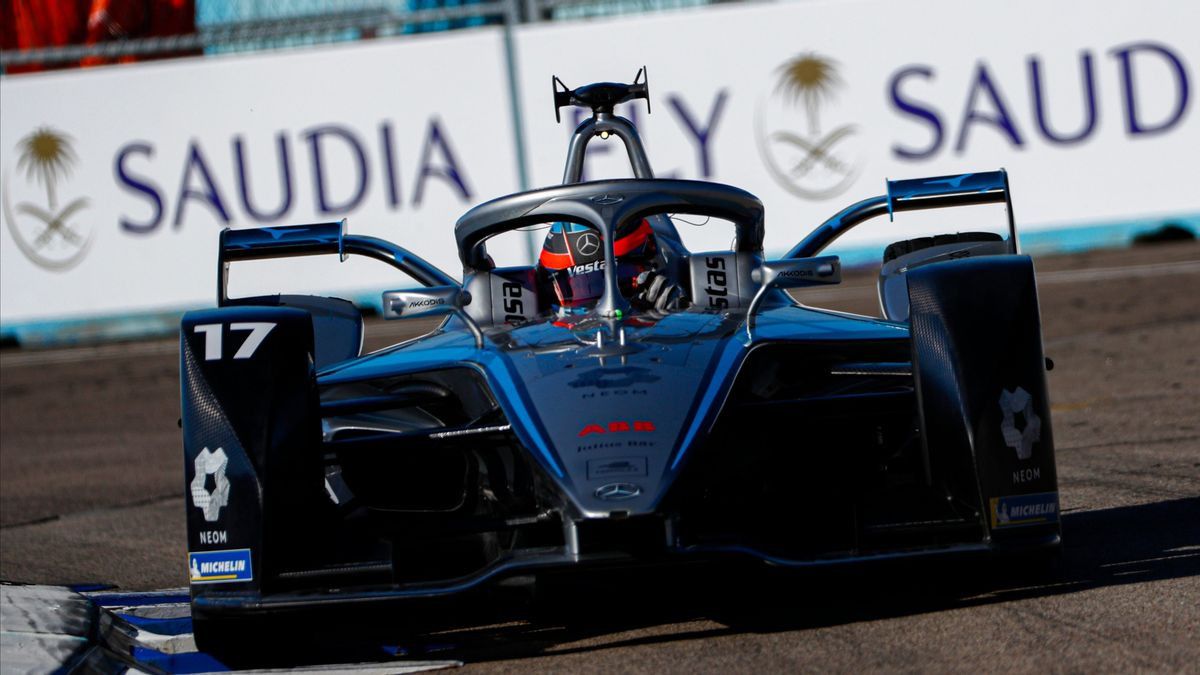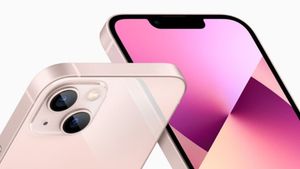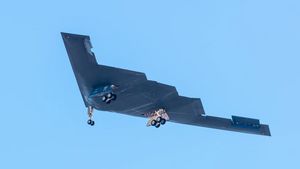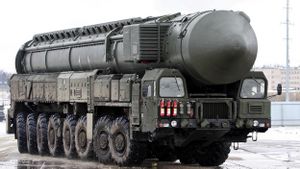JAKARTA - The Jakarta Formula E 2022 series is approaching D day. The single seater open wheel electric car racing event will be held in Ancol on June 4. A new circuit has been built, specifically for the Jakarta Formula E event, which is the 9th series of this year's 16 series.
Prior to Jakarta, the 2022 Formula E race had been held in Diriyah (Saudi Arabia/2 series), Mexico City (Mexico), Rome (Italy/2 series), Monaco and Berlin (Germany/2 series). After the buzz in Jakarta, Formula E will fly to North Africa in a series of Marrakesh (Morocco), New York (US/2 series), London (England/2 series), and Seoul (South Korea/2 series).
Formula E, which was born from the crazy rich idea from Spain of Algerian origin, Alejandro Agag (51 years), was brought by the Governor of DKI Jakarta Anies Baswedan during a visit to New York on June 13, 2019. Initially, Formula E Jakarta was planned to be held in 2020. However, due to the COVID pandemic -19, the plan was postponed until the schedule was met on June 4.
The plans for the Formula E Jakarta show were frenzied. The explanation is from various sides, ranging from economics, technology, to politics, which are associated with rumors of Anies' candidacy as Indonesia's 2024 Presidential Candidate.

"The presence of Formula E in Jakarta is in line with President Jokowi's efforts to reduce Indonesia's dependence on conventional energy and switch to environmentally friendly energy," Anies said in his personal Instagram account, @aniesbaswedan on Saturday, October 16, 2021.
President Jokowi has reviewed preparations for Formula E Jakarta by visiting the Jakarta International E-Prix Circuit (JIEC), the newly built circuit in Ancol on April 25. Jokowi was accompanied by Anies in the review of the circuit.
"I want to see what Formula E preparation looks like on the field. The race track is ready, then the only thing being chased is the paddock and grandstand. There is still time to run out of Eid and we hope that in early June we can see the race," said Jokowi after visiting the Formula E Circuit. Jakarta, April 25 as quoted by Antara.

From the car racer's point of view, the Jakarta Formula E event was greeted with joy. This event is expected to be able to promote Indonesia to the world's eyes.
“This is one of the biggest international automotive events in the world. Hopefully, we can promote Indonesia to the world's eyes and have a positive impact on the progress of tourism and the economy," said Rio Haryanto, Indonesia's first F1 driver to VOI.
Rio tested a Formula E racing car in Valencia on October 3, 2017. At that time he was invited by Agag, the creator of Formula E who was once the boss of the GP2 Addax team. When he was still racing in GP2, Rio had joined Addax.
History of Electric CarsElectric cars have actually been invented more than 200 years ago. Even earlier than diesel-powered cars. A genius Hungarian priest, Anyos Jedlik, in 1828 experimented with making a small car powered by a battery. Jedlik's work is recognized as the first electric car.
At the beginning of the 20th century, electric cars had actually reached 1/3 of the number of cars in the world, but the petroleum boom made manufacturers switch their interests. Petroleum-powered vehicles with much lower production and operating costs are more in demand. Electric-powered cars are getting knocked out.

So that the idea of electric cars does not die, several car manufacturers are trying to develop a hybrid concept. The core of this concept combines the use of electricity and oil to power the car. Renowned German automotive engineer, Ferdinand Porsche is the creator of the hybrid car concept through the Semper Vivus car in 1901.
Promotion of electric cars, which are claimed to be an environmentally friendly means of future transportation, is currently being intensively promoted. The emergence of electric car factories is to an impressive extent, as if this is the mode of transportation of the future.
Not Completely Eco-FriendlyRegarding the implementation of Formula E Jakarta, Deputy Governor of DKI Jakarta, Ahmad Riza Patria said that it was the commitment of the DKI Jakarta Provincial Government to implement the Jakarta Langit Biru program.
“This activity is not just a Formula E competition, but actually this is a form of our commitment, all of us to the Langit Biru program. So, we want our air to be clean, healthy, one of which will use an electric car," said Riza at the DKI Jakarta City Hall, 11 May to VOI.
Quoted from the Enginereene.com website, there is an opinion that putting forward electric cars for environmentally friendly campaigns is actually not right. If the question of being environmentally friendly is only related to exhaust emissions, it is true. Electric cars do not produce exhaust gases, but produce other pollutants, namely battery waste.

Battery waste ranks at the top of the pollution problem generated by electric cars. As with all types of auto parts, batteries or batteries need to be replaced within a certain period of time in order for an electric car to operate.
“Battery or battery waste is classified as toxic hazardous waste, or B3. That's why every battery or battery manufacturer has a smelter to accommodate waste. Then the waste is recycled so that the waste produced is no longer classified as B3," said Hadi, President Director of PT Wacana Prima Sentosa, a manufacturer of car batteries or Massiv batteries to VOI.
“Regarding Formula E or electric cars, as far as I know they use lithium batteries. Handling lithium battery waste is much more difficult than ordinary batteries. If not handled properly it can be very dangerous because it can cause a fire, and a fire caused by an exploding lithium battery is difficult to extinguish. Handling electric car battery waste must be carefully considered," said Hadi again.

When it comes to electric cars, one element that cannot be released is nickel. Quoted from the Nickel Institute, this mineral is the 24th most abundant element in the earth's crust. Nickel plays an important role in technologies and applications that assist environmental policy goals, such as reducing carbon emissions.
In the context of electric cars, nickel is needed as a mixture of batteries that become a source of propulsion. This mineral is the most important ingredient in the manufacture of rechargeable batteries, which are used in electric cars. The nickel extraction process through mining is often criticized as not being environmentally friendly.
A study entitled The Impact of Nickel Mining on Soil Properties and Growth of Two Fast-Growing Tropical Trees Specieces published in the International Journal of Forestry Research, describes the adverse effects of nickel mining on the sustainability of tropical forests.
“Nickel is one of the most important mining products in the world. In Indonesia, nickel is produced from open pit mines. Open nickel mining is an intensive process that has a significant impact on tropical rain forests, affecting native vegetation and soil fertility,” said the research article published on November 5, 2020.

There are clearly two opposing sides here, like the story of Dr Jekyll and Mr Hyde. In the context of the environment, electric cars are indeed able to reduce carbon emissions which create a greenhouse effect so that it makes the earth hotter. But on the other hand, electric cars also leave environmental damage through nickel mining which is indispensable as a driving battery material.
Whether because of environmental criticism that overshadows electric cars, at the end of 2021 Formula E managers are thinking of using hydrogen fuel. The use of hydrogen as an electric car propulsion will be tested in the fourth generation car or Gen4, which will be used in five years. This year's Formula E race uses a third-generation or Gen3 car, which is still purely battery-driven.
“Gen3 cars are really great. But we are already thinking about the Gen4 car that will be launched in the next five years. We have to start the conversation now. We plan to use hydrogen fuel cells to generate electricity that powers electric cars. Hopefully we don't run out of money, so we have to withdraw," said Agag, as quoted by Motorsport.com, December 22, 2021.
Formula E's contract with the International Automotive Federation (FIA) is valid for 25 years. The contract does not mention the limits on innovations that Formula E managers can do. It is not impossible that one day there will be a Formula E race that no longer uses pure batteries, but is combined with hydrogen fuel.
The English, Chinese, Japanese, Arabic, and French versions are automatically generated by the AI. So there may still be inaccuracies in translating, please always see Indonesian as our main language. (system supported by DigitalSiber.id)












